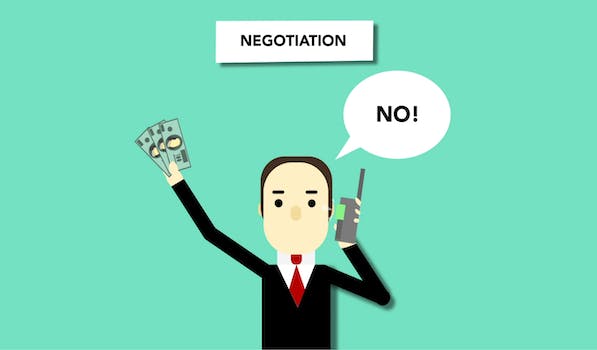How To Start A Business Proposal Letter
“Craft a compelling introduction to win over potential investors and partners.”
Introduction
A business proposal letter is a document that outlines a proposed business idea or project and is sent to potential investors, partners, or clients. It is an important tool for entrepreneurs who are looking to secure funding or partnerships for their business ventures. In this article, we will discuss the key elements of a business proposal letter and provide tips on how to write an effective one.
Understanding the Purpose of a Business Proposal Letter
Starting a business proposal letter can be a daunting task, especially if you are new to the business world. However, it is an essential part of any business venture, as it is the first step in securing potential investors, partners, or clients. In this article, we will guide you through the process of writing a business proposal letter, starting with understanding its purpose.
The purpose of a business proposal letter is to persuade the reader to take action. This action could be anything from investing in your business to partnering with you on a project. The letter should be written in a way that convinces the reader that your business is worth their time and money.
To achieve this, you need to have a clear understanding of your business and its goals. You should be able to articulate what your business does, what sets it apart from competitors, and what you hope to achieve in the future. This information should be presented in a concise and compelling manner.
It is also important to research your target audience before writing the letter. This will help you tailor your message to their specific needs and interests. For example, if you are writing to a potential investor, you should focus on the financial aspects of your business, such as revenue projections and return on investment. If you are writing to a potential partner, you should focus on how your businesses can work together to achieve mutual goals.
Once you have a clear understanding of your business and your target audience, you can begin writing the letter. The letter should be structured in a way that is easy to read and understand. It should start with an introduction that briefly explains who you are and what your business does. This should be followed by a section that outlines the problem your business solves and how it does so.
Next, you should provide evidence to support your claims. This could include statistics, case studies, or testimonials from satisfied customers. It is important to be specific and provide concrete examples of how your business has helped others.
After providing evidence, you should explain your business model and revenue streams. This should include a breakdown of your expenses and how you plan to generate revenue. It is important to be transparent and realistic in your projections.
Finally, you should conclude the letter by summarizing your main points and making a clear call to action. This could be anything from scheduling a meeting to discussing potential partnership opportunities.
In conclusion, starting a business proposal letter requires a clear understanding of your business and your target audience. The letter should be structured in a way that is easy to read and understand, and should provide evidence to support your claims. By following these guidelines, you can create a compelling business proposal letter that persuades the reader to take action.
Identifying the Key Components of a Business Proposal Letter

Starting a business proposal letter can be a daunting task, especially if you are new to the business world. However, with the right guidance and understanding of the key components, you can create a compelling proposal that will grab the attention of potential investors or clients. In this article, we will discuss the essential elements of a business proposal letter and provide tips on how to write a successful one.
The first step in writing a business proposal letter is to identify the purpose of the letter. Are you seeking funding for your business, or are you proposing a partnership or collaboration with another company? Once you have identified the purpose, you can tailor your letter to meet the specific needs of your audience.
The next key component of a business proposal letter is the introduction. This is where you introduce yourself and your business, and provide a brief overview of what your proposal entails. It is important to make a strong first impression, so be sure to highlight your strengths and unique selling points.
After the introduction, you should provide a detailed description of your business and its products or services. This section should include information on your target market, competition, and any relevant industry trends. It is important to demonstrate that you have a thorough understanding of your business and the market in which it operates.
Once you have provided a detailed description of your business, you should move on to the main body of your proposal. This is where you outline your proposal in detail, including the benefits and advantages of your proposal. It is important to be clear and concise, and to provide evidence to support your claims.
In the main body of your proposal, you should also address any potential concerns or objections that your audience may have. This shows that you have considered all aspects of your proposal and are prepared to address any potential issues.
After outlining your proposal, you should provide a clear call to action. This is where you ask your audience to take a specific action, such as investing in your business or agreeing to a partnership. It is important to be clear and direct in your call to action, and to provide any necessary contact information.
Finally, you should close your business proposal letter with a strong conclusion. This is where you summarize your proposal and reiterate the benefits and advantages. It is also a good idea to thank your audience for their time and consideration.
In conclusion, starting a business proposal letter can be a challenging task, but by following these key components, you can create a compelling proposal that will grab the attention of potential investors or clients. Remember to identify the purpose of your letter, provide a strong introduction, describe your business in detail, outline your proposal, address potential concerns, provide a clear call to action, and close with a strong conclusion. With these tips, you can write a successful business proposal letter and take your business to the next level.
Researching and Analyzing the Target Audience
Starting a business proposal letter can be a daunting task, especially if you are not sure where to begin. However, with the right approach, you can create a compelling proposal that will capture the attention of your target audience and help you achieve your business goals. In this article, we will discuss how to start a business proposal letter by researching and analyzing your target audience.
The first step in creating a successful business proposal letter is to research and analyze your target audience. This involves understanding who your audience is, what their needs and interests are, and how your proposal can address those needs. To do this, you will need to conduct thorough research on your target audience, including their demographics, interests, and pain points.
One effective way to research your target audience is to conduct surveys or focus groups. This will allow you to gather valuable feedback from your audience and gain insights into their needs and preferences. You can also use online tools such as Google Analytics or social media analytics to gather data on your target audience’s online behavior and interests.
Once you have gathered enough information about your target audience, it’s time to analyze the data and identify key trends and patterns. This will help you understand what your audience is looking for and how you can tailor your proposal to meet their needs. For example, if your target audience is primarily interested in cost savings, you may want to focus on the cost-effectiveness of your proposal.
Another important aspect of analyzing your target audience is understanding their decision-making process. This involves understanding who the decision-makers are, what factors they consider when making decisions, and how you can influence their decision-making process. For example, if your target audience is a group of executives, you may want to focus on the ROI of your proposal and how it can help them achieve their business goals.
In addition to researching and analyzing your target audience, it’s also important to consider the context in which your proposal will be received. This includes understanding the industry trends, competitive landscape, and regulatory environment. By understanding these factors, you can position your proposal in a way that is relevant and compelling to your target audience.
In conclusion, starting a business proposal letter requires a thorough understanding of your target audience. By researching and analyzing your audience, you can gain valuable insights into their needs and preferences and tailor your proposal to meet those needs. Remember to consider the context in which your proposal will be received and position it in a way that is relevant and compelling to your target audience. With these tips, you can create a successful business proposal letter that will help you achieve your business goals.
Crafting a Compelling Introduction and Executive Summary
Starting a business proposal letter can be a daunting task, especially if you are not sure where to begin. However, with the right approach, you can craft a compelling introduction and executive summary that will capture the attention of your potential client or investor. In this article, we will provide you with some tips on how to start a business proposal letter that will help you make a great first impression.
The first step in crafting a compelling introduction is to do your research. You need to understand your potential client or investor’s needs, goals, and challenges. This will help you tailor your proposal to their specific needs and show them that you understand their business. You can gather this information by conducting market research, analyzing their website and social media presence, and speaking with their employees or customers.
Once you have a good understanding of your potential client or investor, you can start crafting your introduction. Your introduction should be concise and to the point. It should grab their attention and make them want to read more. You can start with a hook, such as a surprising statistic or a thought-provoking question. This will help you stand out from the competition and show your potential client or investor that you are serious about their business.
After your hook, you should provide some background information about your company and your experience. This will help establish your credibility and show your potential client or investor that you have the expertise to help them achieve their goals. You can also highlight any awards or recognition your company has received, as well as any relevant certifications or licenses.
Once you have established your credibility, you can move on to the executive summary. Your executive summary should provide a brief overview of your proposal and highlight the key benefits of working with your company. It should be no more than one or two pages and should be easy to read and understand.
In your executive summary, you should clearly state the problem your potential client or investor is facing and how your company can help solve it. You should also highlight the unique value proposition of your company and explain why you are the best choice for the job. This could include your experience, your track record of success, or your innovative approach to solving problems.
Finally, you should include a call to action in your executive summary. This could be a request for a meeting or a phone call, or it could be a request for more information. Whatever your call to action is, make sure it is clear and easy to follow.
In conclusion, starting a business proposal letter can be challenging, but with the right approach, you can craft a compelling introduction and executive summary that will capture the attention of your potential client or investor. Remember to do your research, establish your credibility, and highlight the key benefits of working with your company. With these tips, you will be well on your way to writing a successful business proposal letter.
Outlining the Proposed Plan and Deliverables in Detail
Starting a business proposal letter can be a daunting task, especially if you are not sure where to begin. However, with the right approach and a clear understanding of what you want to achieve, you can create a compelling proposal that will capture the attention of your potential clients or investors. In this article, we will discuss how to outline the proposed plan and deliverables in detail, which is a crucial step in creating a successful business proposal letter.
The first thing you need to do when outlining your proposed plan is to clearly define your objectives. What do you want to achieve with your proposal? Is it to secure funding for your business, to win a new client, or to launch a new product or service? Once you have a clear understanding of your objectives, you can start to think about the specific deliverables that will help you achieve them.
When outlining your deliverables, it is important to be as specific as possible. For example, if you are proposing a new product, you should include details such as the product features, pricing, and target market. If you are proposing a service, you should outline the specific tasks that you will perform, the timeline for completion, and the expected outcomes.
In addition to outlining your deliverables, you should also include a detailed timeline for the project. This will help your potential clients or investors understand the scope of the project and the time frame for completion. Be sure to include milestones and deadlines, as well as any potential roadblocks or challenges that may arise.
Another important aspect of outlining your proposed plan is to include a budget. This will help your potential clients or investors understand the financial implications of the project and whether it is feasible within their budget. Be sure to include all costs associated with the project, including materials, labor, and any other expenses.
When outlining your proposed plan, it is also important to consider the competition. What sets your proposal apart from others in the market? What unique value do you bring to the table? Be sure to highlight these factors in your proposal, as they will help you stand out from the competition and win over potential clients or investors.
Finally, when outlining your proposed plan, it is important to be realistic and honest. Don’t overpromise or exaggerate your capabilities, as this will only lead to disappointment and mistrust. Instead, be transparent about your strengths and weaknesses, and focus on delivering high-quality work that meets the needs of your clients or investors.
In conclusion, outlining the proposed plan and deliverables in detail is a crucial step in creating a successful business proposal letter. By clearly defining your objectives, outlining your deliverables, including a detailed timeline and budget, considering the competition, and being realistic and honest, you can create a compelling proposal that will capture the attention of your potential clients or investors. With the right approach and a clear understanding of what you want to achieve, you can take your business to the next level and achieve your goals.
Conclusion
In conclusion, starting a business proposal letter requires careful planning and attention to detail. It is important to clearly state the purpose of the proposal, highlight the benefits of the proposed business venture, and provide a clear call to action. By following these guidelines, you can increase your chances of success and secure the support and investment needed to turn your business idea into a reality.






